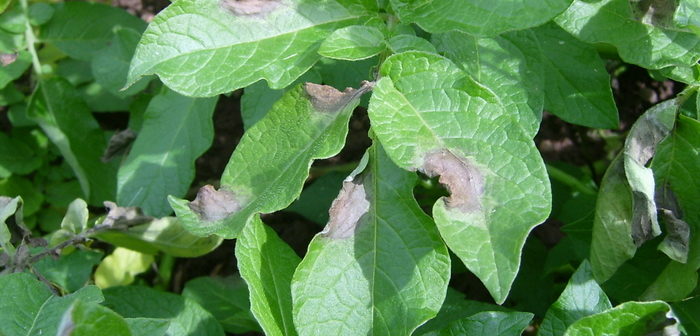Recent conditions have favoured potato blight, with Hutton periods being recorded across the country. Late potato blight (Phytophthora infestans) is a very damaging disease affecting foliage, stems and tubers and the recent changes to more dominant aggressive strains plus emergence of the fluazinam-tolerant blight strain 37_A2 has made decisions around control strategies more challenging for growers. Dominic Lamb, UK and Ireland Business Manager for Gowan, advises growers to include a zoxamide spray in their programmes for both efficacy and resistance management purposes. “Bringing diversity into the blight control programme makes good sense when it comes to resistance management.”
To protect existing fungicides and maintain their efficacy, especially with more aggressive blight populations with new strains tolerant to leading blight fungicides, it is vital that growers and advisors build strong anti-resistance strategies into their programmes, says Dominic. “I always advise growers to integrate fungicides with different modes of action and those with multi-site activity. This way blight is effectively controlled and it ensures that individual fungicide groups are not put under too much pressure. We must use the existing range of available products more wisely than we have been doing in the past. I would recommend that a zoxium® containing product is included in every programme.”
Dr. Lamb points out that Electis 75 WG contains two complimentary active ingredients, zoxamide® and mancozeb from two different chemical groups “At the moment there is no known resistance strains of blight to Electis and annual monitoring has shown no shift in its status. The low resistance risk of Electis is proven by its label, allowing up to eight sprays in any one season, although we would never recommend such an approach! It controls all blight races and strains, including those tolerant to phenylamides and fluazinam.”
Fluazinam was a vital and very widely used tool for tuber blight control, but as it is no longer effective on the new 37_A2 strains of late blight, growers and agronomists need to look for different ways of maximising their late blight programme. Zoxamide, in both Presidium and Electis, is a protectant fungicide but brings several important considerations in particular when it comes to tuber blight reduction.
Tuber blight is brought about by motile zoospores being formed on the leaf and then dropping down to the soil to infect tuber, so tuber blight protection should start as early as tuber initiation and end at senescence. Not all fungicides have activity on zoospores and only a few prevent their production.
Zoxamide works on a different site within the blight fungus to almost all other active ingredients, stopping cell division within the nucleus and whilst not actually killing the motile zoospores responsible for tuber blight it does greatly reduce their production and release, thus reducing the burden for the zoospore-specific products such as cyazofamid and amisulbrom. For this reason the zoxamide-containing products in the UK – Electis 75WG, Roxam 75WG and Presidium – fit well from stable canopy onwards and are particularly suited towards the end of the programme before the final sporicidal sprays.




